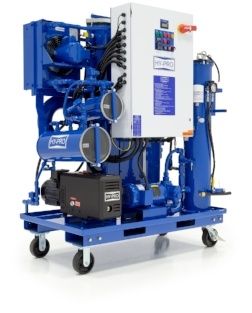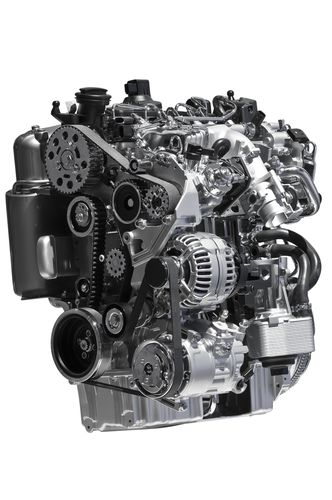 If the hydraulic, lubricating, compressor or gear oil you use is not made of a water base in
If the hydraulic, lubricating, compressor or gear oil you use is not made of a water base in
There are three types of water in a typical system: free water
Using 100ppm for an upper water limit for most systems using mineral base oils, this means all free and emulsified water and a significant portion of dissolved water must be removed.
A vacuum dehydrator is one of the very few methods to remove dissolved water from oil. Let's take a look at these three types of water in your system. It will give you a solid foundation for how the vacuum dehydrator works in the end.
Free Water
Free water is separate from the oil in the system and can be visually identified in a sample bottle from the oil. The specific gravity of most oils is less than 1.00, so water usually collects at the bottom of the sample bottle or reservoir/system.
Due to this reason, free water can easily be decanted, or removed by draining through a reservoir drain port. Decanting is recognized as a smart step, if available, even when using a vacuum dehydrator to increase the water removal speed.
Emulsified Water
Emulsified water is water that has blended with the oil. Even though
Dissolved Water
Dissolved water is water that has been dissolved
Similarly, when the temperature of oil rises, the capacity to absorb water rises, but to a point. Any extra water cannot be dissolved and is free floating with the oil. We then call this water free water. After all free and emulsified water is removed, the vacuum dehydrator then focuses solely on dissolved water. By this time, the vast majority of water in the system has already been removed. Removing dissolved water is a slow process.
It is highly recommended the vacuum dehydrator uses a water % saturation meter so the amount of dissolved water in the oil can be confirmed in real time. If the machine is not fitted with a % saturation meter, capture an oil sample and perform Karl Fischer titration to confirm actual ppm down to single digits. Crackle test is not recommended since it will only show the presence of water above 500ppm.
So what is a vacuum dehydrator?
A vacuum dehydrator is a total water removal machine designed to be attached to an online or offline system/reservoir/barrel to remove all free & emulsified water and upwards of 90%+ of dissolved water.
How does it work?
In a nutshell, a vacuum dehydrator heats the oil (130-160F), if necessary, and draws a vacuum (18-27"Hg) on the oil. Raising the temperature while drawing a vacuum causes water to flash to steam at a temperature low enough not to cause thermal breakdown of the oil.
At sea level, water flashes to steam at 212F. The target zone for vacuum dehydration is 130-160F, but the oil will dictate this temperature. A very stable synthetic oil may require a hotter temperature than a standard mineral oil. Draw a higher vacuum to flash water to steam at a lower temperature (keeping in mind a higher vacuum is slower water removal than lower vacuum, so choose your balance between low temperature and water removal rate).
If there is excess water in your system, check out our vacuum dehydrator. It works with any system and on all oils from mineral base to synthetic to exotic, ranging up to ISOVG1000 oils. Best of all, it's guaranteed to remove the unwanted water in your system to your target of <100ppm and further if needed.
There are other ways to remove free water from the system, such as water-absorbing filter elements and coalesce technology on limited oils without aggressive additive packages. However, to possess the capability to remove water from every oil onsite regardless of additive package or oil type or viscosity (up to ISOVG1000), a vacuum dehydrator is the only real option available for portability and complete water removal.
If you work in a sawmill, steel mill, power plant, construction site, drill rig or any place that uses hydraulics/lube/gear/compressor oils and have issues with water, give us a call. If your extra oil barrels sit outside in the environment, you will have water in your oil. The barrel breathes in/out with temperature change. It's not a matter of if, but when we will need to address water contamination for what it is, an unwanted contaminant. You don't want it there. It's doing damage as we speak. What are you waiting for?








